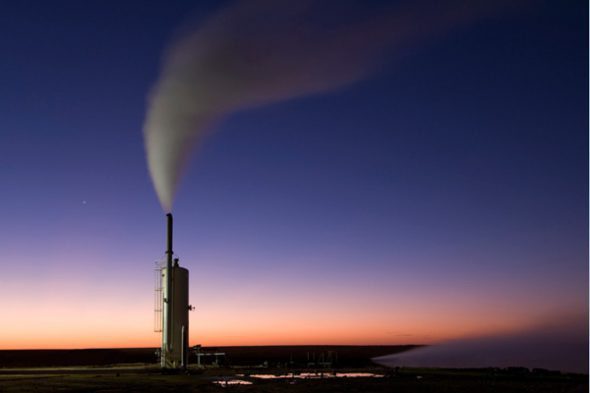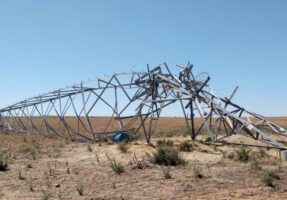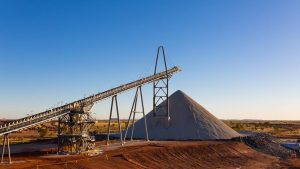Australia’s renewable energy analyst community – one of the country’s smallest demographics – has revived its interest in the geothermal sector as Geodynamics nears what is being described as a globally significant test in April.
Paul Jensz, the a gribusiness and energy analyst for Melbourne-based PhillipCapital has rated Geodynamics a speculative buy ahead of the close loop flow test, which he says could be the precursor of a commercially viable project – sometime down the track.
That may be a brave call, given the geothermal sector’s recent history of disappointments and plunging share prices, but Jensz says that while it’s a “very high risk” investment, Geodynamics rates as the “best speculative” buy in the local sustainable energy sector because of the long term prize of delivering 1,500MW of baseload power by 2025 from the Cooper Basin geothermal resource is still tangible.
As Geodynamics CEO Geoff Ward explained to RenewEconomy last year, the company is keen not to get ahead of itself,or create inflated expectations, but it is confident that it will finally be able to deliver its 1MW pilot project, even if hopes of a larger installation have been dampened by the lack of any immediate, or even mid-term demand for any new base-load energy project in the country.
Still, Jensz says the closed loop test will be significant because it will be one of only five such tests in the world of enhanced geothermal systems at a depth of 3kms or more.
He expects Geodynamics to have have $20 million in the bank and the ability to look for, and lock in, a commercial cornerstone investor for the Cooper Deeps in the first quarter of 2014 – that is if Origin Energy does not exercise its right to do so.
Jensz says 1,500MW could potentially be delivered over time if the cost base is competitive with wind and solar, the 20 per cent renewable energy target stays in tact, and overall energy demand in Australia increases.
He estimates that the Habanero resource should deliver an enhanced 2P Energy Reserve at cost base of A$150 to $200/MWh, which can support a 10MW to 25MW power station. Its best opportunity may be a 10MW plant with a local supplier taking an off-take agreement.
Geodynamics has other interests – such as its Savo island project in the Solomon Islands and its Gove refinery proposal for the Northern Territory – which is awaiting the outcome of negotiations over a gas supply deal, and whether Rio Tinto is committing to the long term future of the plant.
Jensz values Geodynamics at 39c a share (compared to its current price of 12c, and its 2008 peak of more than $2 – but that is based on a delivering 1,500MW of power plants in the Cooper Basin by 2025, with a “high risk” weighting. Removing the risk from that project adds $7 a share to that valuation, but that’s a long way down the track.










